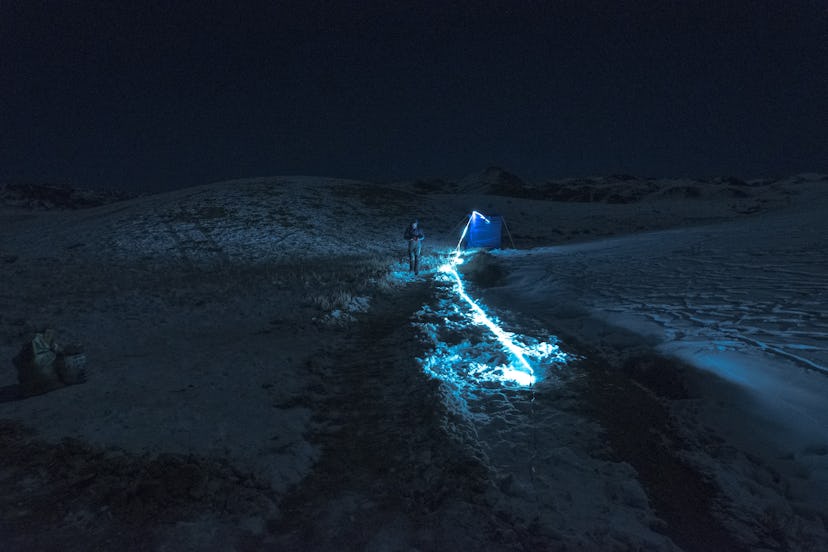Loro Piana Cashmere: Soft To The Touch, and Now Even Easier on the Eyes
The Italian luxury house tapped the director of March of the Penguins to showcase its prized material.

“Loro Piana cashmere.”
The phrase, in and of itself, can turn shoppers’ heads from across the room; few materials in the fashion universe are as coveted (or, honestly, as expensive) as the plush, featherlight fibers spun by this Italian uber-luxury purveyor.
Loro Piana has long been a discreet-chic wardrobe stopover for the very wealthy (and the equally as restrained).
Its goods bare almost no logos or recognizable markings (save for the occasional use of Loro Piana’s scripted-font icon), and its color palette is muted. Think: quietly attractive albeit riotously upscale.
At the Whitney Museum of American Art in New York City last night, Loro Piana held the U.S. premiere of a new short film titled Cashmere—The Origin of a Secret, which reveals a sensory immersion into the beginnings of the textile (which can be viewed online). The label drew a high-profile crowd for the event: guests included Uma Thurman, Liev Schreiber and Eddie Redmayne.
Filmed by the Academy Award-winning director Luc Jacquet (who won an Oscar in 2006 for the much beloved March of the Penguins), it is the first of three commissioned works by the brand, conceived to demonstrate Loro Piana’s place in the source-to-market chain—and its position as a custodian of both the environments in which it works and the people upon which it relies.
On location in Mongolia. Courtesy of Simone Giovanni Colombo for Loro Piana.
No words are spoken in the film, which follows a group of Capra hircus goat breeders in Inner Mongolia. Instead, Jacquet lenses a multi-season narrative arc interspersed with abstract sounds rather than human language; the thud of hooves pounding caked-and-cracked dirt, the borderline jarring bleating of a kid, the delicate peppering of seeds falling on ice. The Mongolian desert is extremely hot in the summer, and just the opposite in the winter; Jacquet captures this, but maintains a softness befitting of his work’s name, simultaneously. The closing scenes continue to show the goats and their herders in various stages of time and place, but there are splices of film that depict cashmere coming to life, from shorn hair to processed strands.
Pier Luigi Loro Piana, whose family founded the company, would marvel at the film’s conclusion about flying from Mongolia to New York City, having spent one night in a limitless rural expanse and the next having dinner at Le Cirque. He wryly implied that he may have preferred the former. Jacquet would say that he learned an important lesson from both the breeders and their animals: “modesty.”
Eddie Redmayne and Pier Luigi Loro Piana. Courtesy of Loro Piana.
Uma Thurman. Courtesy of Loro Piana.
A vignette of the Mongolian landscape. Courtesy of Giulio Di Sturco for Loro Piana.